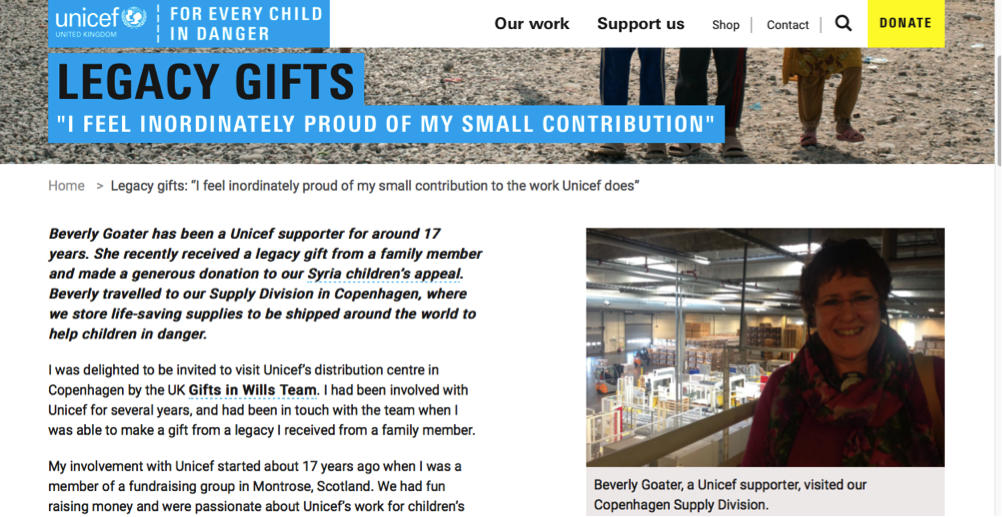CDE project 10 appendix 1: UNICEF UK
- Written by
- The Commission on the Donor Experience
- Added
- April 17, 2017
UNICEF UK

UNICEF UK had reviewed its legacy strategy and concluded that it needed to engage a wider audience and to reach more people while simultaneously finding innovative ways to engage existing supporters.
UNICEF decided to establish a dialogue with supporters to understand what motivates supporters to leave a gift in their wills, and to identify ways of providing them with the experience and information they expect and need. Secondly, the approach sought to engage supporters in a new way by gaining insight in the form of direct conversations with supporters and legacy supporters, enabling it to use the content provided directly by them to inspire and engage others.
As part of the new strategy to inspire and engage both new and existing supporters, UNICEF spoke to several of its closest legacy supporters who shared their own stories to encourage conversations amongst peers and supporters. Personal experiences with the charity and motivations to consider a gift in their wills were then used to support the legacy programme, encouraging and inspiring others to do the same, each helping UNICEF to achieve its aim of creating a safer world for children. Similarly, blog posts written by supporters were placed on the website pages and were used to ensure that new visitors to the site were met with accessible content. In effect, UNICEF was ‘social norming’ its website.
Events were used to keep in touch with supporters, to ensure that supporters were informed and inspired, and that relationships continued to be built. Throughout this continuing events programme, feedback and insight were sought continually. The events separated committed legacy supporters from prospecting events and allowed UNICEF to tailor the message according to supporters’ commitment to including legacies in their wills. ‘Pledger’ events placed emphasis on thanking people for their on-going support and acknowledging the special decision to leave a gift they have made. Prospecting events offered the same heartfelt thanks, whilst introducing the supporters to consider a legacy. Events also allowed the fundraising team to create a space in which supporters could network with one another and create a sense of community. Many people recognised one another from previous years, and could come together to unite, share stories and strengthen their relationships.
The stewardship programme focuses on personalisation and on ensuring each supporter knows that s/he is valued as an individual and not just as a collective group of people. To ensure this starts at the beginning of the legacy journey, the legacy team has created personalised website pages for anyone who registers an interest and requests a legacy guide. For many supporters, this translates to hand-written cards and personal phone calls once staff have established a good relationship with them. The level of interaction with each legacy supporter is established on a case-by-case basis to ensure engagement with them is on a level at which they feel comfortable. At every turn, it is personalisation that guides actions within the overall legacy programme.


















